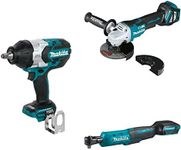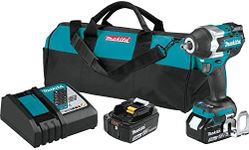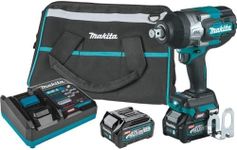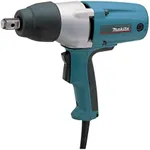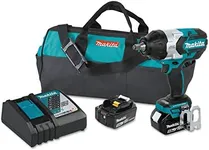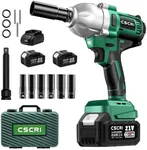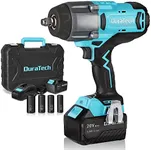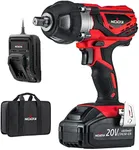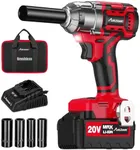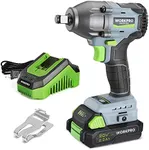Buying Guide for the Best Makita Impact Wrenches
When choosing an impact wrench, it's important to consider the specific tasks you will be using it for. Impact wrenches are powerful tools designed to deliver high torque output with minimal effort, making them ideal for loosening and tightening bolts and nuts. To find the best fit for your needs, you should evaluate several key specifications that will determine the tool's performance and suitability for your projects.TorqueTorque is the rotational force that the impact wrench can apply. This is a crucial spec because it determines the tool's ability to loosen or tighten fasteners. Torque is measured in foot-pounds (ft-lbs) or Newton-meters (Nm). For light-duty tasks, such as assembling furniture or working on small engines, a torque rating of 100-200 ft-lbs may be sufficient. For automotive work or more demanding tasks, you might need a wrench with 200-400 ft-lbs of torque. Heavy-duty applications, like industrial or construction work, may require 400 ft-lbs or more. Choose a torque rating based on the toughest job you expect to handle.
Speed (RPM)Speed, measured in revolutions per minute (RPM), indicates how fast the impact wrench can rotate. Higher speeds can make the tool more efficient for driving fasteners quickly. Light-duty tasks may only require speeds up to 2,000 RPM, while more demanding jobs might benefit from speeds of 2,000-3,000 RPM. For heavy-duty applications, look for impact wrenches with speeds exceeding 3,000 RPM. Consider the speed range that matches the pace of your work and the types of tasks you will be performing.
Impacts Per Minute (IPM)Impacts Per Minute (IPM) measures how many times the impact mechanism strikes per minute. This is important because higher IPM can help break loose stubborn fasteners more effectively. For light-duty tasks, an IPM of 2,000-3,000 may be adequate. Medium-duty tasks might require 3,000-4,000 IPM, while heavy-duty applications could benefit from 4,000 IPM or more. Choose an IPM rating that aligns with the difficulty of the fasteners you will be working with.
Drive SizeThe drive size refers to the size of the square drive that holds the socket. Common sizes include 1/4-inch, 3/8-inch, 1/2-inch, and 3/4-inch. The drive size you need depends on the size of the fasteners you will be working with. For small fasteners, a 1/4-inch or 3/8-inch drive may be sufficient. For automotive work, a 1/2-inch drive is commonly used. For larger industrial or construction fasteners, a 3/4-inch drive may be necessary. Match the drive size to the typical fastener sizes in your projects.
Power SourceImpact wrenches can be powered by electricity (corded or cordless) or air (pneumatic). Corded electric models offer consistent power but require access to an outlet. Cordless models provide portability and convenience, with battery life being a key consideration. Pneumatic models are powerful and often used in professional settings, but they require an air compressor. Choose the power source that best fits your work environment and mobility needs.
Weight and ErgonomicsThe weight and ergonomics of an impact wrench affect user comfort and fatigue during extended use. Lighter models are easier to handle and reduce strain, making them suitable for prolonged tasks. Heavier models may offer more power but can be tiring to use. Ergonomic features like comfortable grips and balanced designs can enhance usability. Consider how long you will be using the tool and choose a model that feels comfortable and manageable for your needs.
